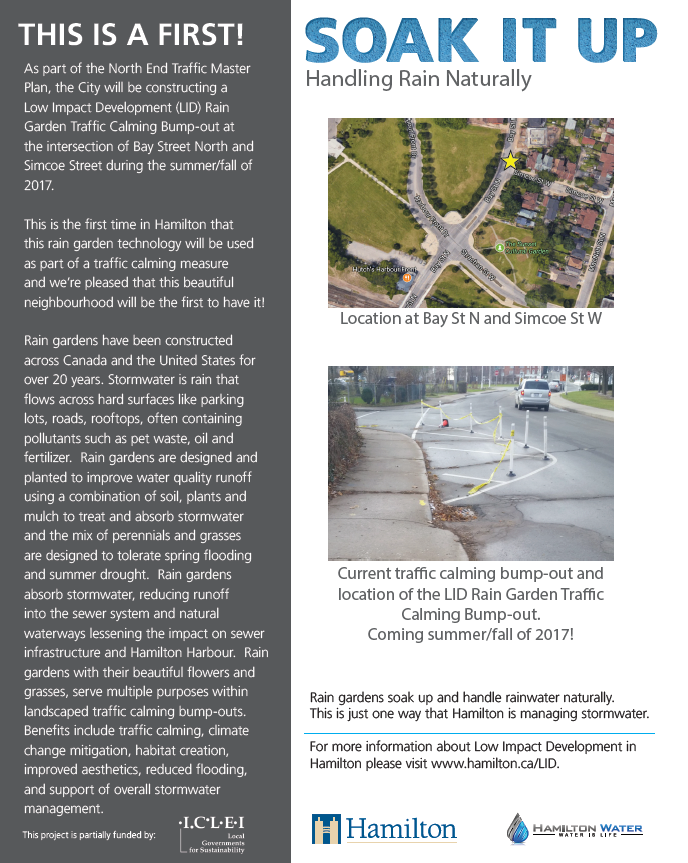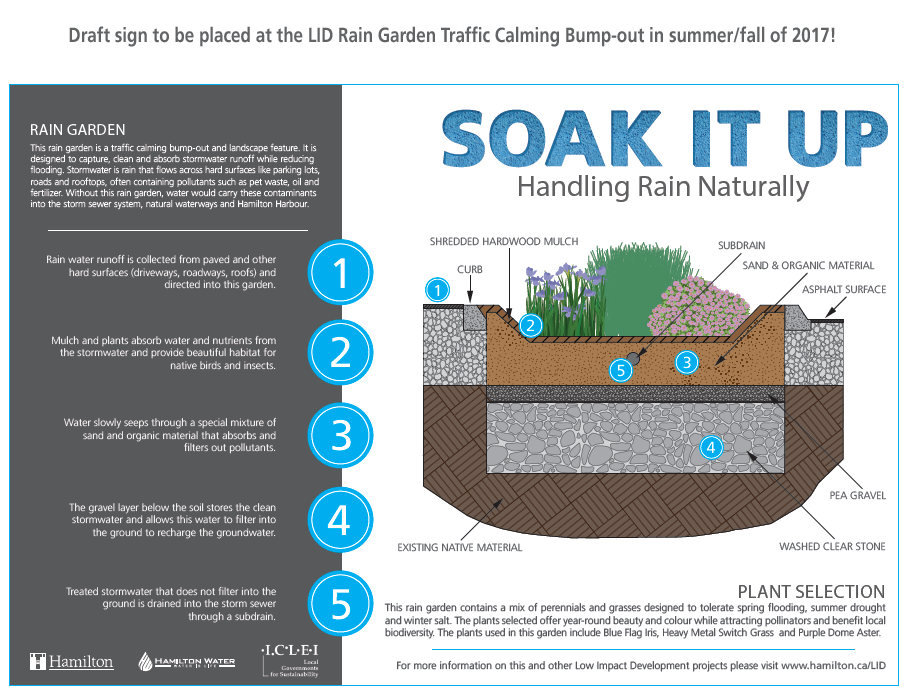Understanding and Assessing Impacts
This case study addresses the climate impacts risks and vulnerabilities related to extreme precipitation events. In the last decade, the City of Hamilton has experienced many unprecedented heavy rainstorms, such as events in 2009 and 2013, causing devastating damages to both private properties and public infrastructure as a result of flooding. As such, it is critical for the City to implement a diverse set of stormwater management strategies, including Low Impact Development (LID). Currently, the City of Hamilton is working on implementing their North End Traffic Management Plan, the purpose of which is to resolve neighbourhood traffic and transportation problems through the application of traffic improvement measures, including the installation of temporary traffic calming measures. This provided an excellent opportunity for the City to include a rain garden at a new road bumpout site in order to pilot the use and implementation of LID. Ultimately, the City hopes to make LID a standard practice in their suite of stormwater infrastructure solutions through pilot implementation.

